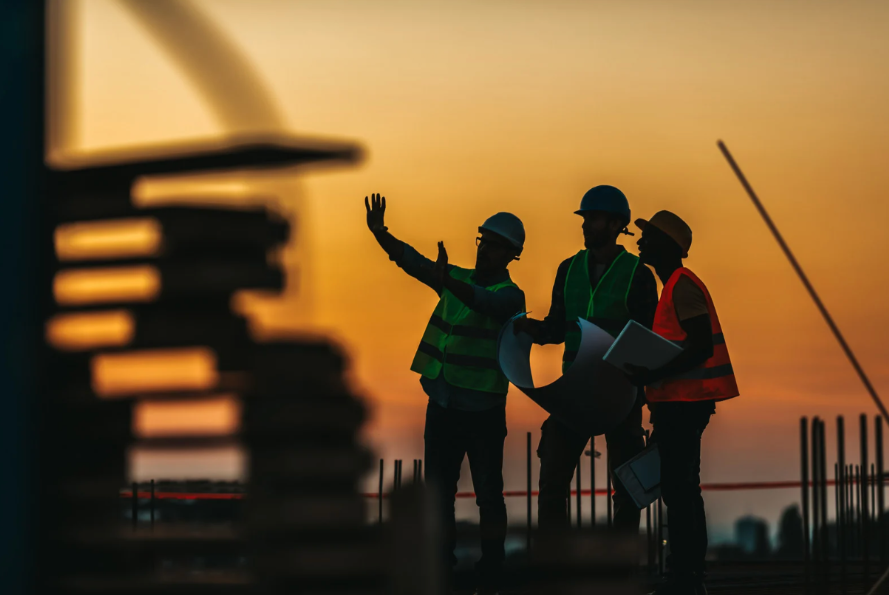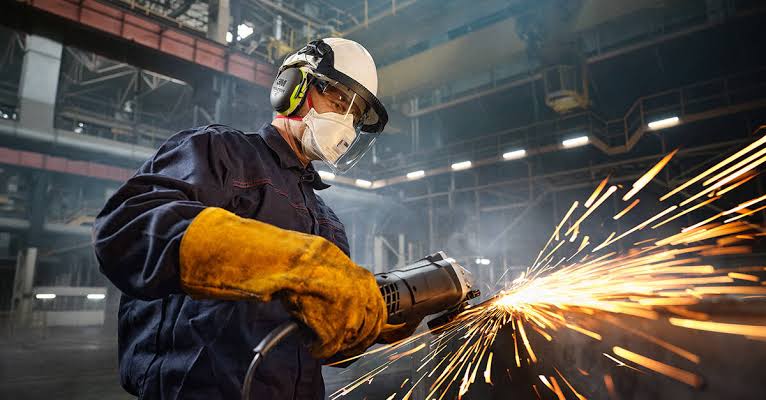
Have you ever walked into a tall building and wondered what keeps it standing? Or felt safe in your home during a storm? The answer lies in the careful work of professionals who make sure our buildings are strong and safe.
These experts work behind the scenes to protect us every day, yet many people never think about their important role.
Why Building Safety Matters
Buildings need to be strong enough to handle many challenges. They face strong winds, heavy snow, earthquakes, and daily use by people. When buildings are made well, we rarely think about what keeps them safe. But when something goes wrong, the results can be serious.
According to the National Institute of Building Sciences, every $1 spent on building safety saves society $13 in future disaster costs. This shows how important good building design really is. Building experts are not just creating structures – they are protecting people and investments.
The Federal Emergency Management Agency (FEMA) reports that buildings built to modern safety standards are 77% less likely to be damaged during natural disasters. This is why building codes keep getting updated and improved over time.
The Hidden Framework
Every building has a skeleton you can’t see. This hidden framework supports everything else and keeps the building standing tall through all kinds of challenges.
Here’s what makes up this important hidden framework:
- Foundation: The strong base that spreads the weight of the building into the ground. Different soil types need different foundation designs.
- Beams and columns: The bones of the building that hold up floors and walls. These can be made of steel, concrete, or strong wood.
- Load-bearing walls: Special walls that support weight from above. These walls cannot be removed during renovations without adding other support.
- Connections: The joints that hold everything together. These must be strong enough to handle pushing and pulling forces.
- Bracing: Special supports that prevent the building from leaning or twisting in high winds or earthquakes.
- Roof trusses: Frameworks that support the roof and keep it from sagging under snow or rain.
These parts work as a team. If one part is weak, the whole building could be in danger. The building’s design must consider how all these parts work together.
Common Building Problems
Buildings can develop problems over time. Here are issues that experts often find:
- Foundation settling: When the ground under a building shifts. This can cause cracks and uneven floors.
- Water damage: Moisture that weakens wood and concrete. Over time, this can rot important supports.
- Poor original design: When corners were cut during planning. This is especially common in buildings made before modern safety codes.
- Age-related wear: Materials breaking down over many years. Even the strongest buildings need maintenance.
- Termite and pest damage: Insects that eat away at wooden supports. This silent damage can weaken a building from within.
- Roof failures: Problems that let water into the building. A leaky roof can damage everything below it.
- Connection failures: When the pieces holding the building together become loose or rusted.
A report from the American Society of Civil Engineers found that 39% of homes over 25 years old have at least one structural issue that needs attention. This number jumps to 54% for homes in areas with extreme weather conditions.
Signs Your Building Might Need Help
Buildings often show warning signs before serious problems happen. Learning to spot these signs can help you fix issues before they become dangerous and expensive.
Here are key warning signs to watch for:
- Cracks in walls, especially ones wider than a quarter inch
- Doors or windows that stick or won’t close properly
- Floors that slope or feel bouncy when you walk on them
- Water stains on ceilings or walls that keep coming back
- Bowing or leaning walls that don’t look straight
- Sagging rooflines that should be straight
- Cracks in the foundation that get bigger over time
- Gaps between walls and ceilings or floors
- Unusual creaking or popping sounds in the structure
If you notice these signs, it’s time to call a professional. Ignoring these warnings can lead to bigger problems later. According to HomeAdvisor research, addressing structural issues early can save homeowners an average of 65% compared to waiting until the problem becomes severe.
The Experts Behind Building Safety
Different professionals work together to keep buildings safe. Each expert plays an important role in the process:
- Architects design buildings with beauty and function in mind
- Construction managers oversee the building process from start to finish
- Building inspectors check that everything meets safety codes
- Materials engineers test and improve building materials
- Contractors and builders turn plans into real structures
Another key player is the structural engineer denver co who checks that buildings can stand strong against all forces of nature. They use math and science to make sure buildings won’t collapse or fail.
Civil engineers also play a crucial role by making sure the building site is properly prepared. They analyze soil conditions and drainage to prevent future problems.
Building safety is truly a team effort. When these professionals work well together, they create buildings that last for generations.
How Buildings Are Made Safer
Modern buildings are safer than ever because of advances in many areas:
- Better building codes that set minimum safety standards for all construction
- Computer modeling that tests designs before building starts, finding problems early
- Advanced materials that are stronger and lighter than what was available in the past
- Regular inspections during and after construction to catch any issues
- Improved understanding of how buildings respond to earthquakes and high winds
- Better connection systems that hold buildings together during stress
- Fire-resistant materials and designs that slow the spread of flames
Experts from the International Code Council say that modern building codes have reduced damage from natural disasters by up to 87% compared to older standards. This means newer buildings are much more likely to survive extreme weather events.
Renovating Older Buildings
Many people love older buildings for their charm and character. But making them safe requires special care and knowledge. Renovating historic structures presents unique challenges that modern buildings don’t have.
Here’s what makes older building renovations different:
- Understanding the original design and materials used
- Testing existing materials to see if they’re still strong
- Strengthening weak points without changing the building’s character
- Updating systems like electrical and plumbing without harming the structure
- Meeting modern safety codes while preserving historic features
- Working with sometimes unusual or outdated building techniques
- Finding skilled workers who understand older construction methods
Old buildings often hide their problems. What looks like a simple wall might actually be holding up the roof! This is why experts need to study the building carefully before making any changes.
The National Trust for Historic Preservation estimates that renovating an older building typically costs 20-25% more than comparable new construction, largely due to the extra care needed to address structural issues while preserving character.
Protecting Buildings in Extreme Weather
As weather patterns change, buildings face new challenges. Heat waves can warp materials. Heavy rains test waterproofing. Strong winds push against walls and roofs. The buildings that last are the ones designed to handle these conditions.
Buildings in Denver and other mountain areas must handle heavy snow loads. The Denver Building Code requires roofs to support at least 30 pounds per square foot of snow weight, that’s like having a small child standing on every square foot of your roof!
Coastal buildings face different challenges. They need to withstand salt spray that corrodes metal and strong hurricane winds that can tear off roofs. In Florida, building codes now require homes to withstand winds of up to 150 miles per hour in some areas.
In earthquake zones like California, buildings need special designs that allow them to flex without breaking. These buildings use special connections and materials that can bend without failing during ground movement.
A study by the Insurance Institute for Business & Home Safety found that buildings designed for extreme weather typically cost only 5-10% more to build, but are 40-60% less likely to suffer major damage during severe weather events.
Smart Technology for Safer Buildings
New tools are making buildings even safer than ever before. Technology is changing how we monitor and protect our structures in exciting ways.
Here are some of the new technologies being used:
- Sensors that detect tiny movements in the structure before problems are visible
- Automatic systems that adjust to changing conditions like high winds or heavy snow
- Drones that inspect hard-to-reach areas like tall roofs and towers
- Special coatings that protect against fire and water damage
- 3D scanning that creates detailed models of existing buildings
- Artificial intelligence that predicts when parts of a building might need repair
- Smart materials that can change properties based on environmental conditions
- Remote monitoring systems that alert owners to potential problems
These technologies help spot problems early, before they become dangerous. They also make inspections safer for workers who would otherwise need to climb to dangerous heights.
The construction technology market is growing rapidly, with over $10 billion invested in new construction tech startups in the past five years, according to Construction Dive industry reports. Much of this investment is going toward technologies that improve building safety and monitoring.
The Hidden Costs of Cutting Corners
Some builders try to save money by using cheaper materials or skipping important safety steps. This might seem like a good idea at first, but it usually leads to problems later.
A study by the Construction Industry Institute found that for every dollar “saved” by cutting corners on structural elements, building owners spend an average of $4 to fix resulting problems within the first ten years.
Common shortcuts that cause problems include:
- Using undersized support beams
- Skipping waterproofing steps
- Installing inadequate foundations
- Using lower-grade fasteners and connectors
- Rushing concrete curing time
- Installing insufficient roof bracing
- Skipping proper site drainage work
Quality construction may cost more upfront, but it saves money and prevents headaches in the long run. It’s always cheaper to build something right the first time than to fix it later.
Why Building Safety Matters to You
Even if you’re not in construction, building safety affects your daily life in many important ways. Safe buildings:
- Protect your family and possessions from harm
- Maintain property values in your neighborhood
- Reduce insurance costs for everyone
- Create peace of mind during storms and natural events
- Prevent injuries and save lives in emergencies
- Save money on repairs and maintenance
- Use less energy when properly built
- Last longer, reducing waste and environmental impact
- Provide comfortable spaces that work as intended
When you buy or rent a home, you’re putting your trust in the people who designed and built it. Good construction professionals take this responsibility seriously.
Conclusion
The next time you enter a building, remember the unseen heroes who made sure it was safe. From the earliest design to the final inspection, many experts work hard to protect us.
If you own a home or building, regular maintenance checks can catch small problems before they grow. Experts recommend having a professional inspection at least every 10 years, or more often in areas with extreme weather.
Here are some final tips to keep your building safe:
- Don’t ignore small cracks or leaks – they often signal bigger problems
- Keep gutters and drainage systems clear to prevent water damage
- Be careful about removing walls during renovations
- Ask about the structural implications of any major changes
- Keep maintenance records to track issues over time
- Check your roof after major storms
- Take settlement cracks seriously, especially if they’re growing
- Make sure any contractors you hire are properly licensed and insured
Building safety isn’t just about following rules, it’s about protecting lives and creating spaces where we can all feel secure. By understanding the importance of structural integrity and working with qualified professionals, we can ensure our buildings continue to serve us well for generations to come.
Remember that investing in quality construction and maintenance today prevents expensive problems tomorrow. When it comes to the buildings we live and work in, cutting corners never pays off in the long run.
The strongest buildings are those that are well-designed, carefully built, and properly maintained. With the right approach to construction and renovation, we can create spaces that are not just beautiful and functional, but truly safe and secure for everyone who uses them.



